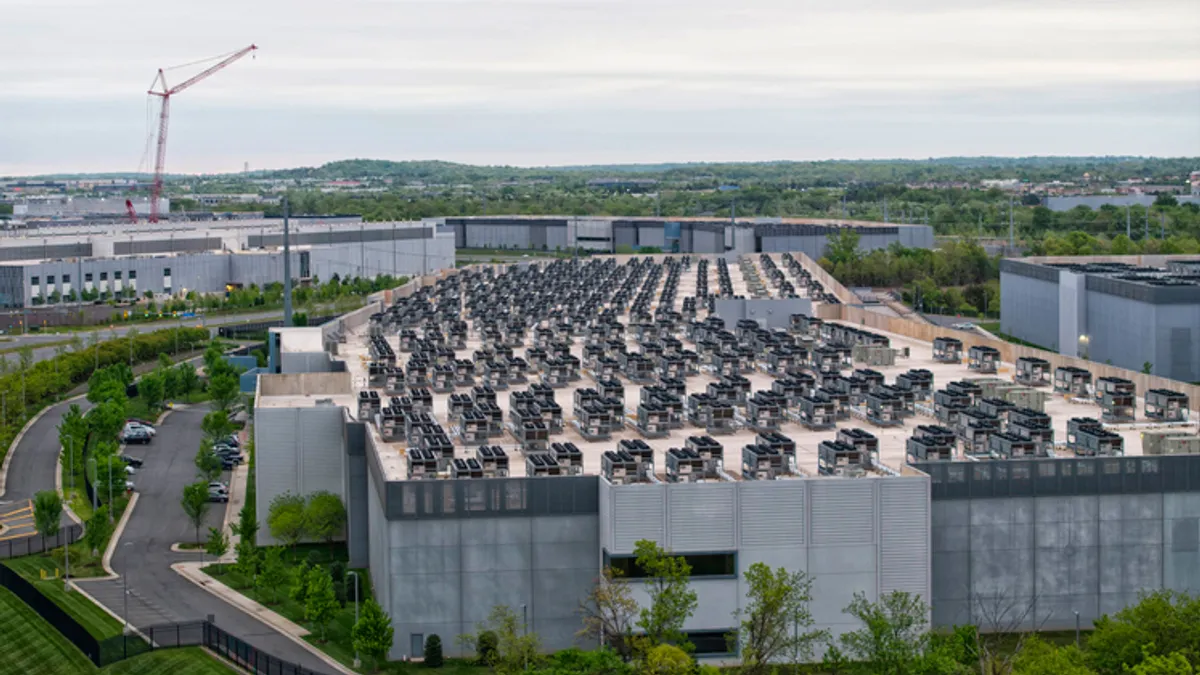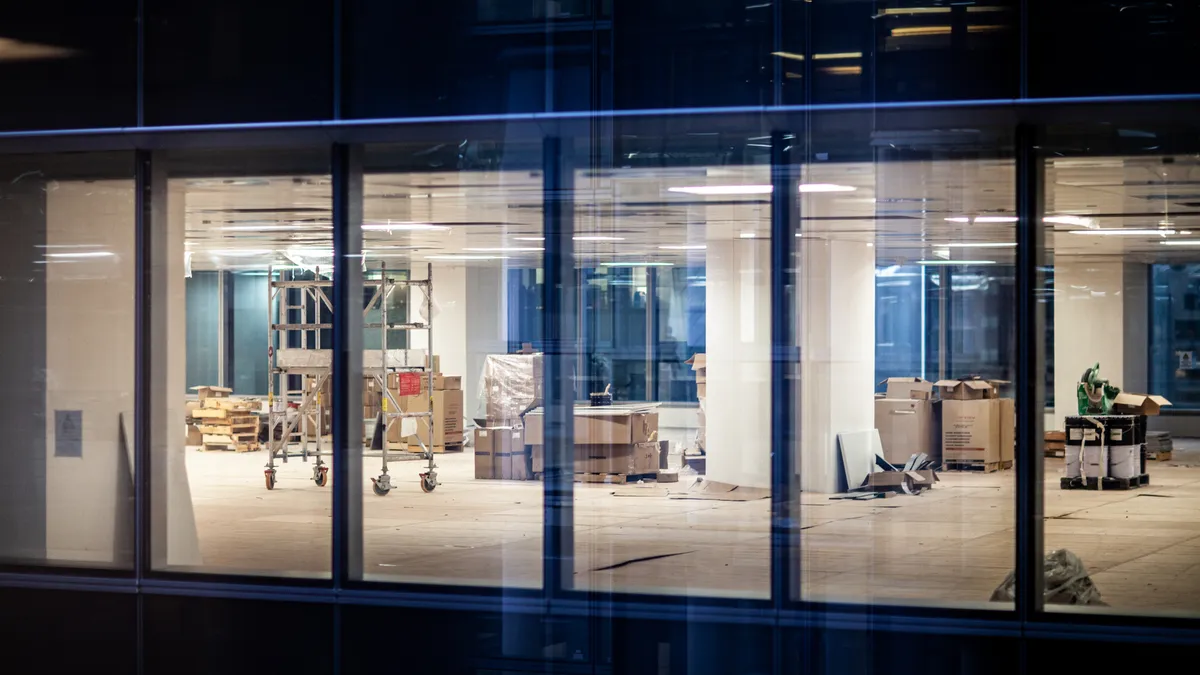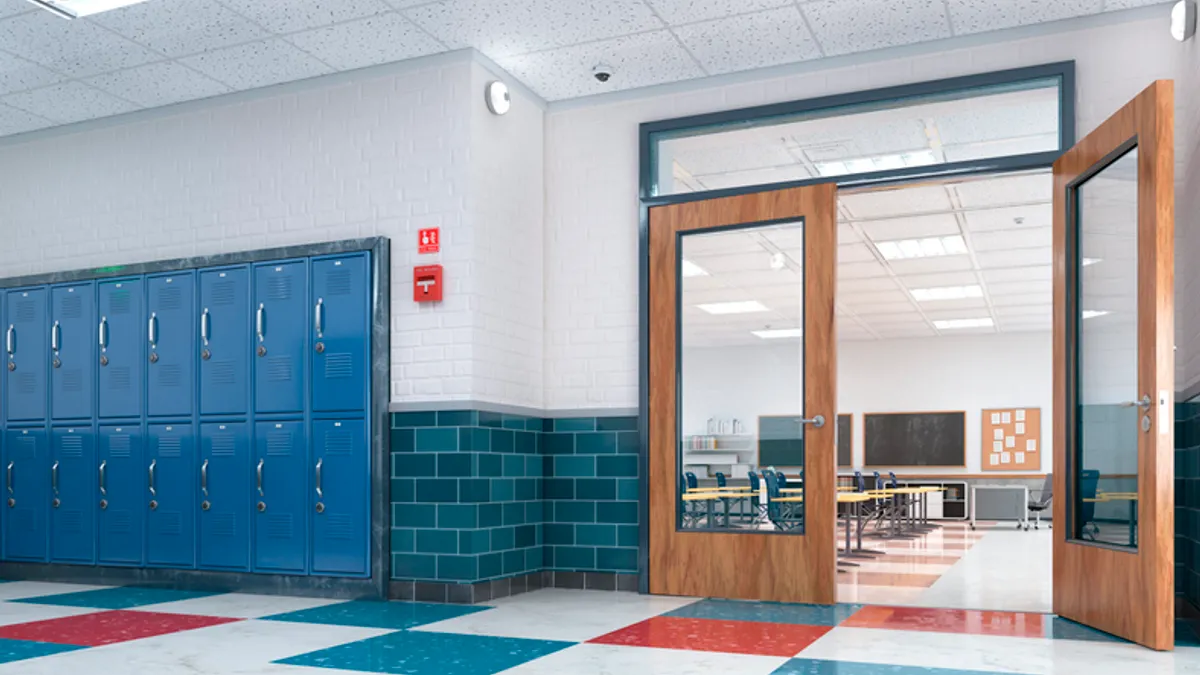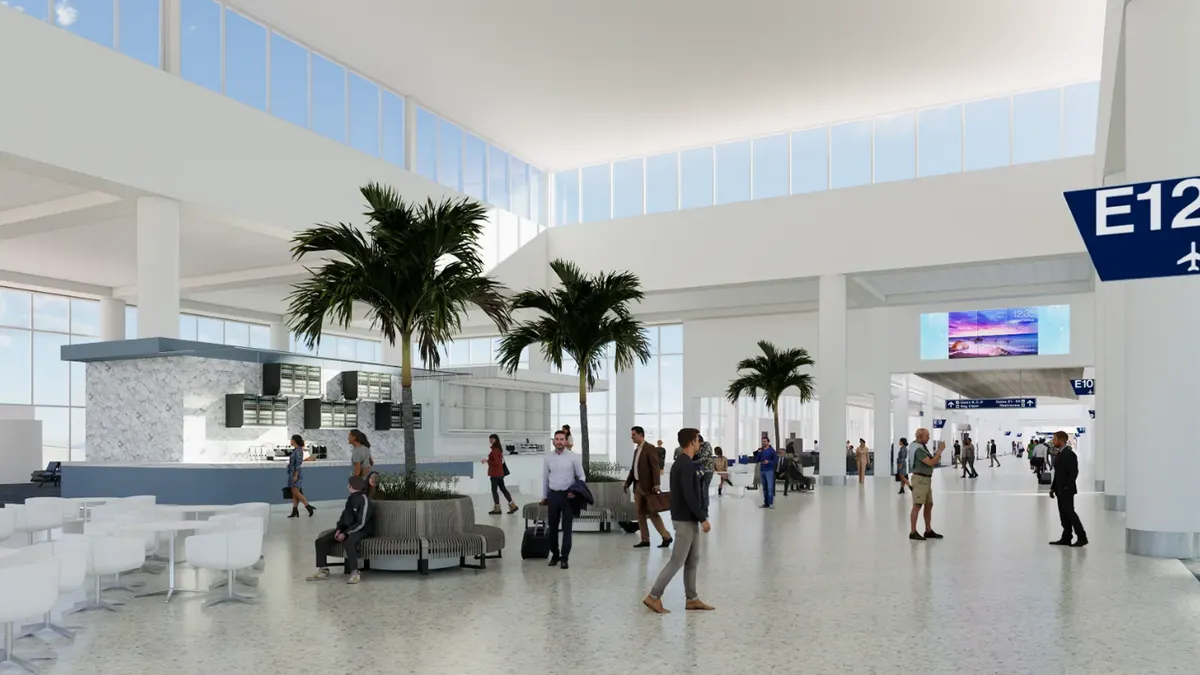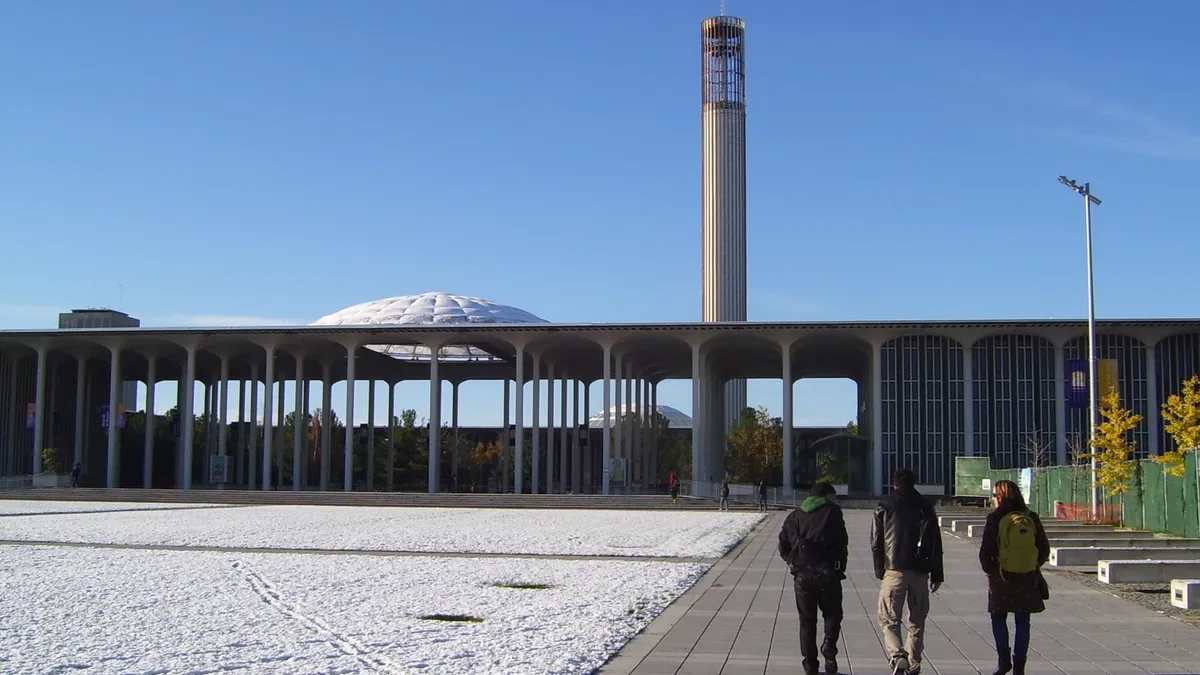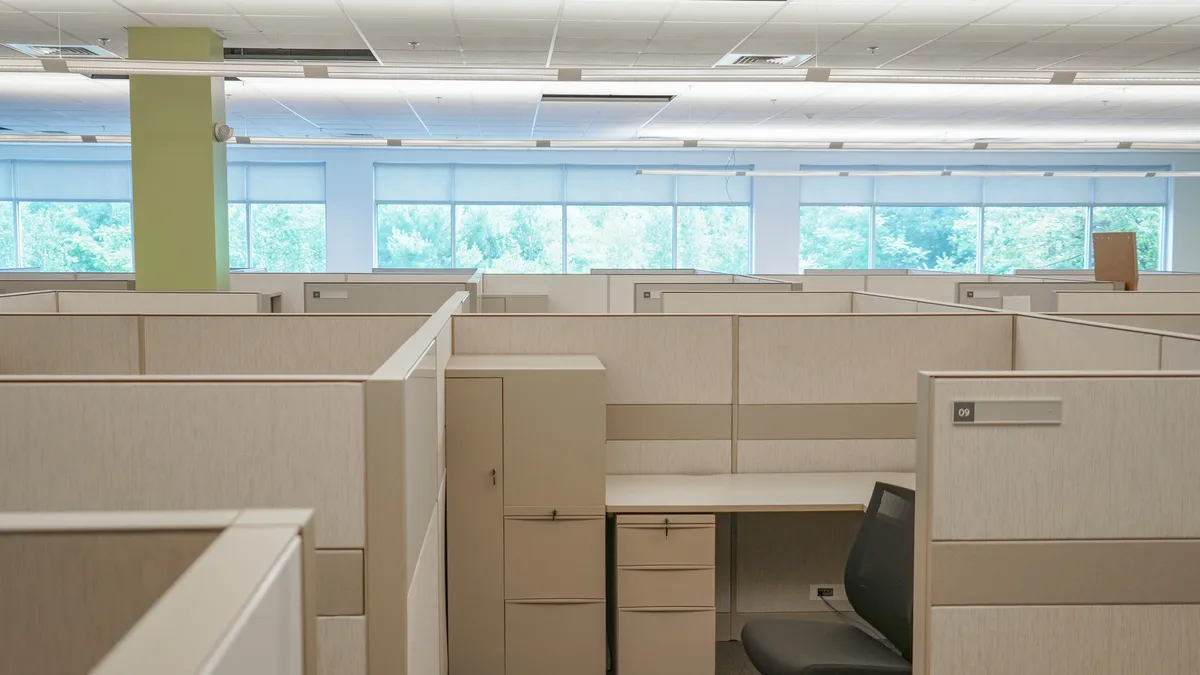The story has been updated to include comments from Jessica Morin, director of U.S. office research at CBRE.
After six consecutive quarters of negative net absorption and hitting a record vacancy rate of 20.1% in the first half of 2024, the U.S. office market continued to rebound in the third quarter, with shifting patterns of office attendance and the U.S. Federal Reserve’s interest rate cuts in September and November prompting more favorable conditions for commercial real estate owners and operators ahead.
The U.S. office market saw 4.3 million square feet of net absorption in the third quarter of 2024 — up roughly 87% from the previous quarter — marking a second consecutive quarter of positive demand for space, according to a CBRE Q3 market report.
The overall vacancy rate also held steady for a second consecutive quarter at 19%, following nine quarters of increases, the report states, with net absorption exceeding the 3.5 million square feet of construction completions in the third quarter.
The prime office vacancy rate fell 20 basis points quarter over quarter, to 15.5%, per the report. Since the first quarter of 2020, prime buildings have recorded 51 million square feet of positive net absorption, compared with 168 million square feet of negative net absorption for non-prime buildings, CBRE notes.
Leasing activity was lower than the prior quarter but up 11.5% year over year, to 51.5 million square feet in the third quarter. Renewals continue to drive leasing activity, the report states. Renewals have exceeded 40% of total leasing activity for the past six quarters, whereas lease renewals made up an average of 31% of leasing activity per quarter in 2018 and 2019.
Q3 average asking rent increased 0.7% year over year to $36.23 per square foot, while averaging taking rent remained unchanged, per the report. CBRE noted that tenants “maintained leverage in lease negotiations,” with the discount between average asking and taking rent “holding steady at 11.5%.”
Landlords have an incentive to maintain or increase asking rents because they influence property valuations and financing requirements, Jessica Morin, director of U.S. office research for CBRE, told CFO Dive for its story about the report. While tenants still have the upper hand in negotiations, the actual mix of the discounts they will see may be poised to change as some financially strapped landlords in basic “commodity buildings” are weighing whether to continue using concessions or to lower their asking rent, Morin said in emailed responses to CFO Dive.
“Concessions are typically an upfront cost for landlords, including free or prorated rent for the first several months of a tenant’s term and tenant allowances to build out office space,” Morin said. “If landlords do not have the capital to cover these record-high concessions, they will need to roll back concessions and lower asking rents instead.”
Following a “mostly downward trend” over the past few years, the average size of leases that were at least 10,000 square feet increased for the second consecutive quarter, to 29,875 square feet, per the report.
Positive demand for office space over the second and third quarters of 2024 was partially offset by 9.3 million square feet of negative absorption in the first quarter of 2024, “putting the year-to-date total [through Sept. 30] to negative 2.7 million square feet,” CBRE says.
Sublease space decreased in four of the past five quarters, accounting for 4.1% of total inventory in Q3, down from 4.6% a year ago, CBRE says. The total amount of sublease space available in the U.S. office market stood at 171 million square feet in the third quarter, reflecting a 12% decline from its peak in the second quarter of 2023, although it remains significantly higher than the 96 million square feet of sublease space recorded in the first quarter of 2020.
“The market is showing signs of stabilization where the worst is most likely behind us and markets are going to start to calibrate around a new normal,” Morin said. “With that said, several indicators, including two quarters of positive net absorption, above average leasing activity, a healthy pipeline of tenants actively searching for space, a slowing construction pipeline, and recent survey results showing more companies planning for portfolio stability and expansion, underscore our most positive outlook in years.”
In a separate report released Nov. 7, CBRE foresees that near-term leasing activity will stay healthy due to economic growth and greater clarity on corporate tax rates amid expectations of continued rate cuts by the Federal Reserve.
CFO Dive Senior Editor Maura Webber Sadovi contributed to this story.








